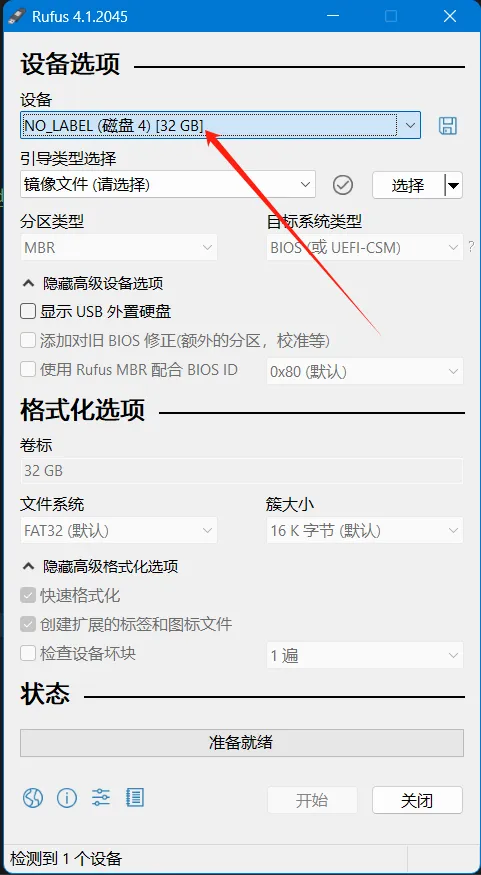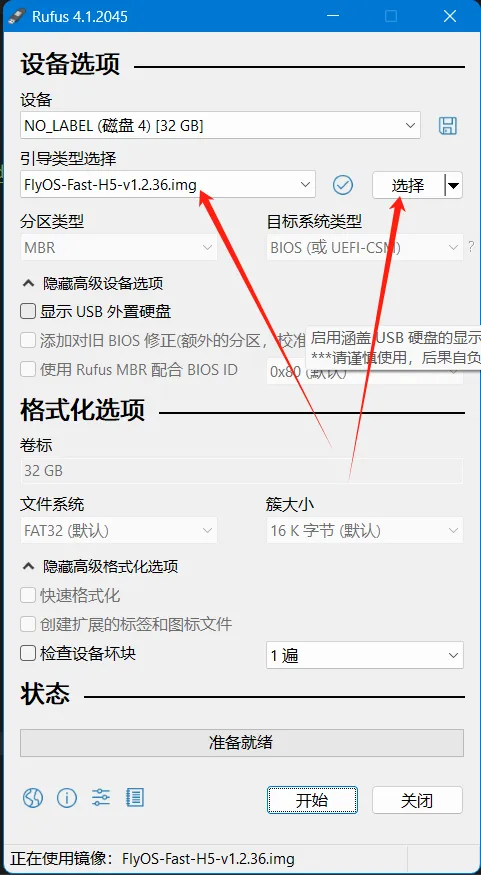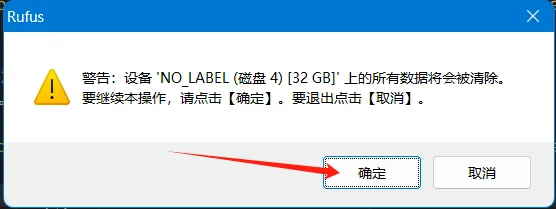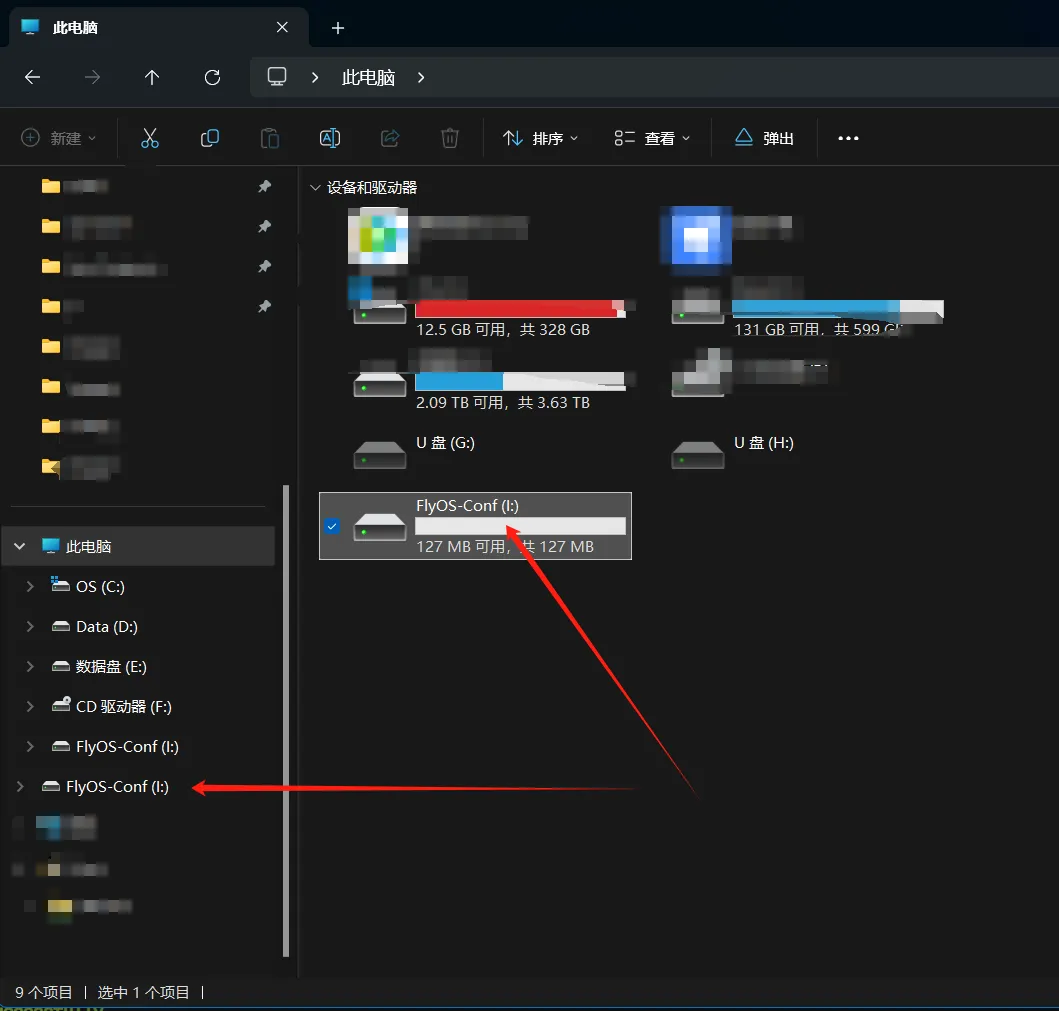System Image Flashing
Preparation
-
Complete the System Download from the previous page.
-
Download a flashing tool. This tutorial will use
Rufusas an example. Other tools such asEtcherorWin32 Disk Imagercan also be used.- Rufus download link: Click to download Chinese or Click to download English (Windows only).
- Etcher download link: Click to download (supports Windows, MacOS, Linux).
- Win32 Disk Imager download link: Click to download (Windows only).
-
Download the system image file. This tutorial will use
FlyOS-Fast-H5.exeas an example. -
Extract the system image file to obtain the
.imgfile.- Double-click or right-click to open
FlyOS-Fast-H5.exe. After a few seconds, a window like the one below will pop up (if the system warns that it is unsafe, click "More info" -> "Run"). - You can choose an extraction directory, then click the
Extractbutton and wait for the extraction to complete.
- After extraction completes, the file
FlyOS-Fast-H5-vx.x.x.imgwill be generated in the extraction directory.x.x.xrepresents the system version number.
- Double-click or right-click to open
-
Prepare the flashing card.
- The flashing card needs to be larger than 4GB. It is recommended to use a SanDisk 32GB C10 or higher TF card (testing shows that many cheaper cards fail to boot after flashing).
- Use an SD card reader to insert the flashing card into the reader, and then insert the reader into the computer.
Flashing the System
-
Open Rufus, select the device. The displayed capacity should match that of the inserted flashing card.

-
Boot selection- by default, leave this asImage file. -
To select the image file, click the
Selectbutton to the right ofBoot selection, and choose the extracted.imgfile. -
After selecting the image file,
Boot selectionwill display the filename of the image.
-
Click the
Startbutton. If a window pops up warning that the disk data will be erased, clickOK.
-
When the flashing finishes, the computer will emit a notification sound and the progress bar will show
Ready.
-
Do not remove the flashing card immediately after flashing completes.
-
Open File Explorer and check whether a disk named
FlyOS-Confappears as a USB drive or removable disk.
-
Open
FlyOS-Conf. If you see the two files shown in the image below, the flashing was successful. -
Among them,
config.txtis the system configuration file. Please refer to the next page for details on modifying the configuration file.